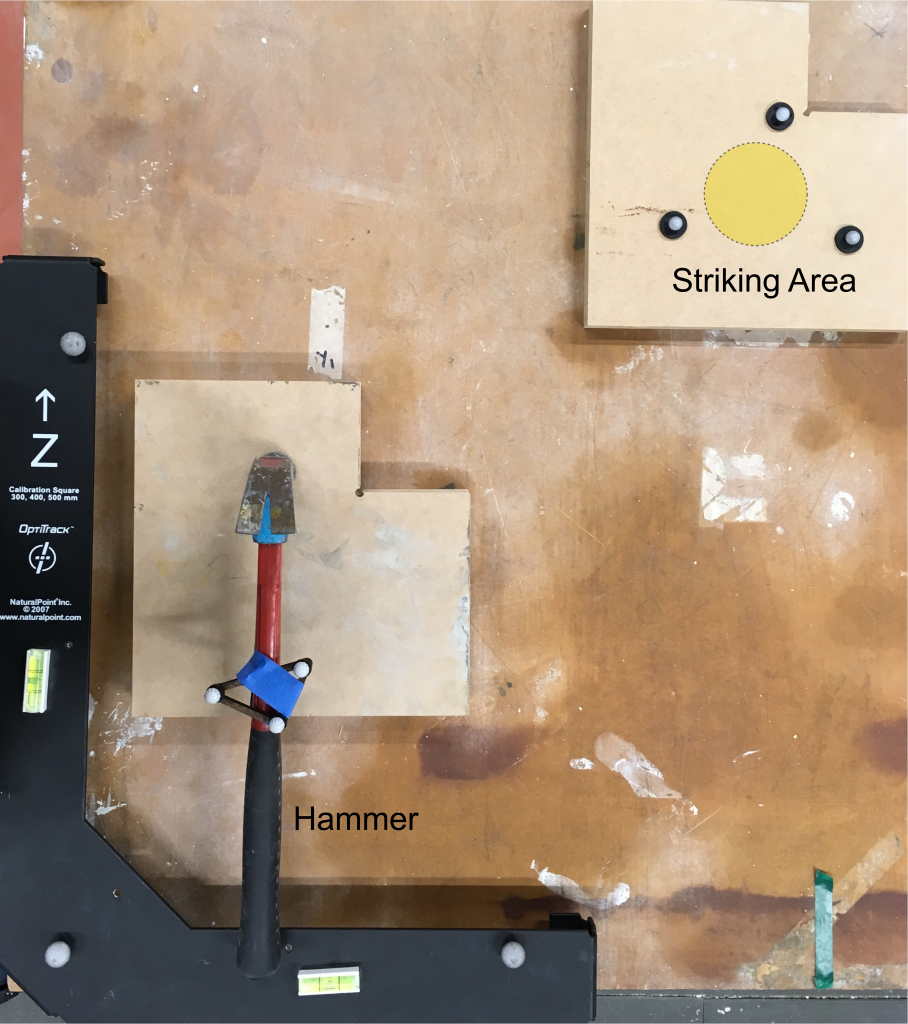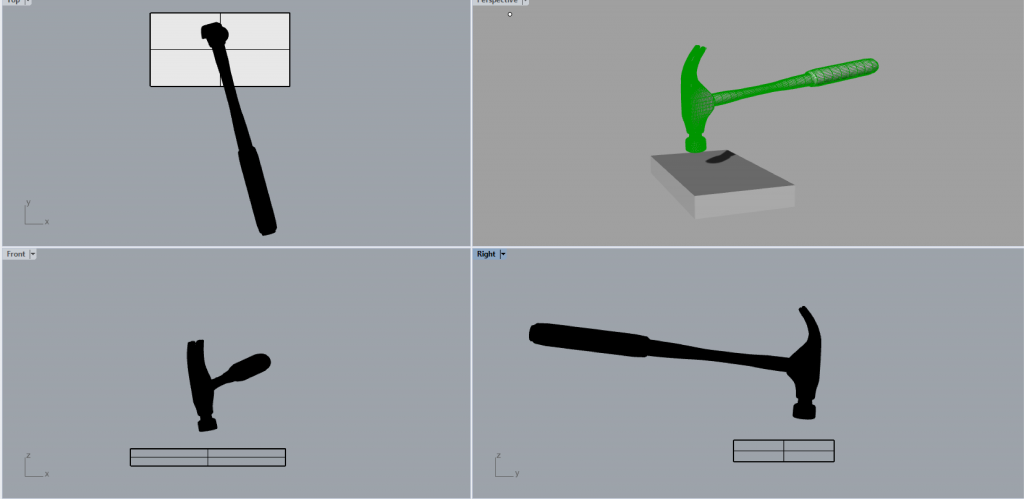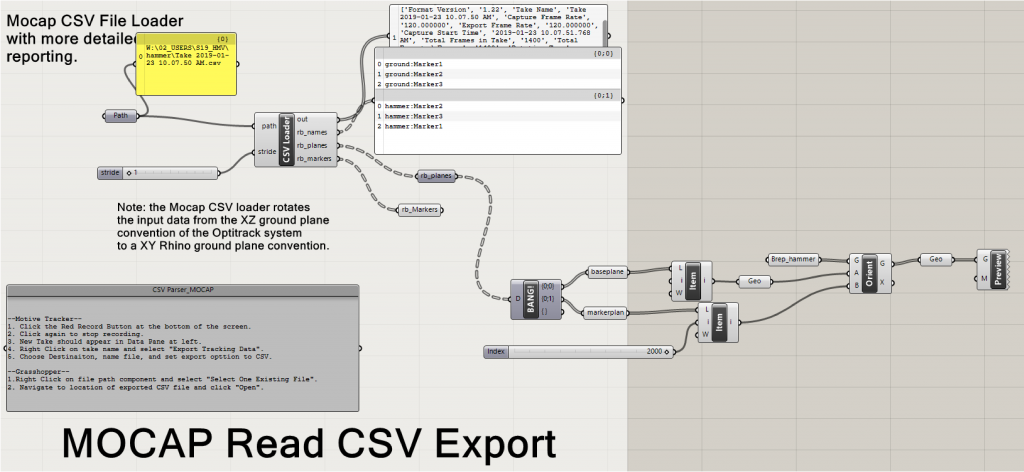By: Yi-Chin Lee and Gabriela Tellez
Introduction:
The objective of this exercise was to convey and analyze the movement of a handheld tool. We analyzed the movement of hammering a nail into a piece of wood. The advantage of of tracking the motion of a hammer is that since this motion requires a great amount of force, the reactive force between the object being hammered and the hammer is more visible.

Process:
Using retroreflective markers and the Motive motion capture software, we were able to track and record the position of the striking area and the path of the hand held tool while in motion. Due to the fact that three points are required to create a plane in Rhino, we placed three markers on each of the vertices on a truss, which we attached to the top side of the hammer to be tracked, as shown in the image above.

With Grasshopper, we were able to match and orient the recorded motion to our hammer model as shown below.

Analysis:
Upon analysis, we found that the motion of hammering an object is comparable to the shape of a parabola in the negative direction, starting at its maximum value. Similarly, the derivative of the position function would be the velocity, starting at a lower velocity and speeding up in the negative direction with a constant acceleration. It was evident through the distance between each plane captured in each time frame that as the hammer got closer to the desired striking area, its velocity increased. Yet, at the striking point, the planes became more dense due to the fact that motion had ended, meaning the velocity became zero.